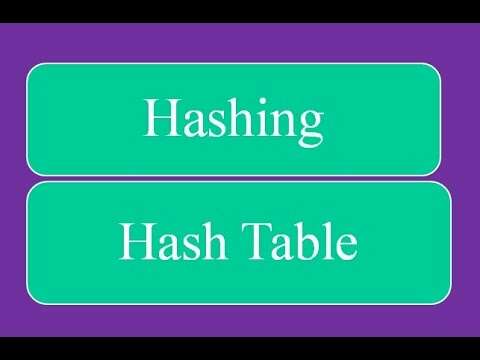
Double Hashing is basically a computer language used in conjunction with hash tables in order to solve hash collisions, which can be caused by data being inserted into a hash table and the hash code of the new data being changed. In double hashing with open address, the second hash is an offset from the original key in the hash table in order to resolve collisions. Double hash tables are also known as ‘duck tables’ because of their design, which allows them to accommodate both keys that are in use at the time. Double hash tables can also store an unlimited number of keys and are not affected by overbit.
Double hashing with hash tables is considered to be an optimal data structure because it increases the availability of keys and makes the hash table as efficient as possible. The efficiency of a hash table depends on how many different inputs it can accept at any given time. If a hash table is forced to accept more keys than it can accept at any given time, it will become slow and will be more prone to collision attacks.
To use a double hash table with hash tables, you have to use two or more hash tables. This means you have to be sure that the two tables are close enough to each other that they can be easily accessed from each other. When you have two or more hash tables, you need to choose the table with the most keys. Then you put the new key in the first table and update its key to match the new value of the first table’s key. Then, you add the new key to the second table, and you are done using two tables for your double hash lookup.
To do a hash lookup in an instance, you would simply take an address and do a lookup on each address in the hash table using the hash table’s key, and then you use the corresponding address in the second table for the value of the second key. You will find that when you do the lookup with two tables, your lookup times will be much faster. So if there are two addresses that you need to lookup with, you will want to use two hash tables. The second table will hold more keys so that you have two lookup lookups per address.
In addition, if you are doing a hash lookup in a virtual machine or a distributed hash table, then you must use the hash table’s key offset and key values instead of its key. {size. The key offset is used by virtual machines for a hash lookup while the key value is used by a distributed hash table for a hash lookup.
When using two tables together, you can also consider using two different sets of keys. This is useful if the two tables have a common key for a particular value of a particular key, and this value is not used very often, but you know that it will be used at some point.
The hash table can also be used for an indexing purpose, which means that you can use the address for a particular address and the hash table for another address and have a lookup for that address. This makes it very convenient for people who need to search through tables that are not always in use.
There are a couple of different ways that double hashing with hash tables can be applied. The most common use is for lookup for the value of an address in a hash table, but there are other ways that can be used.


